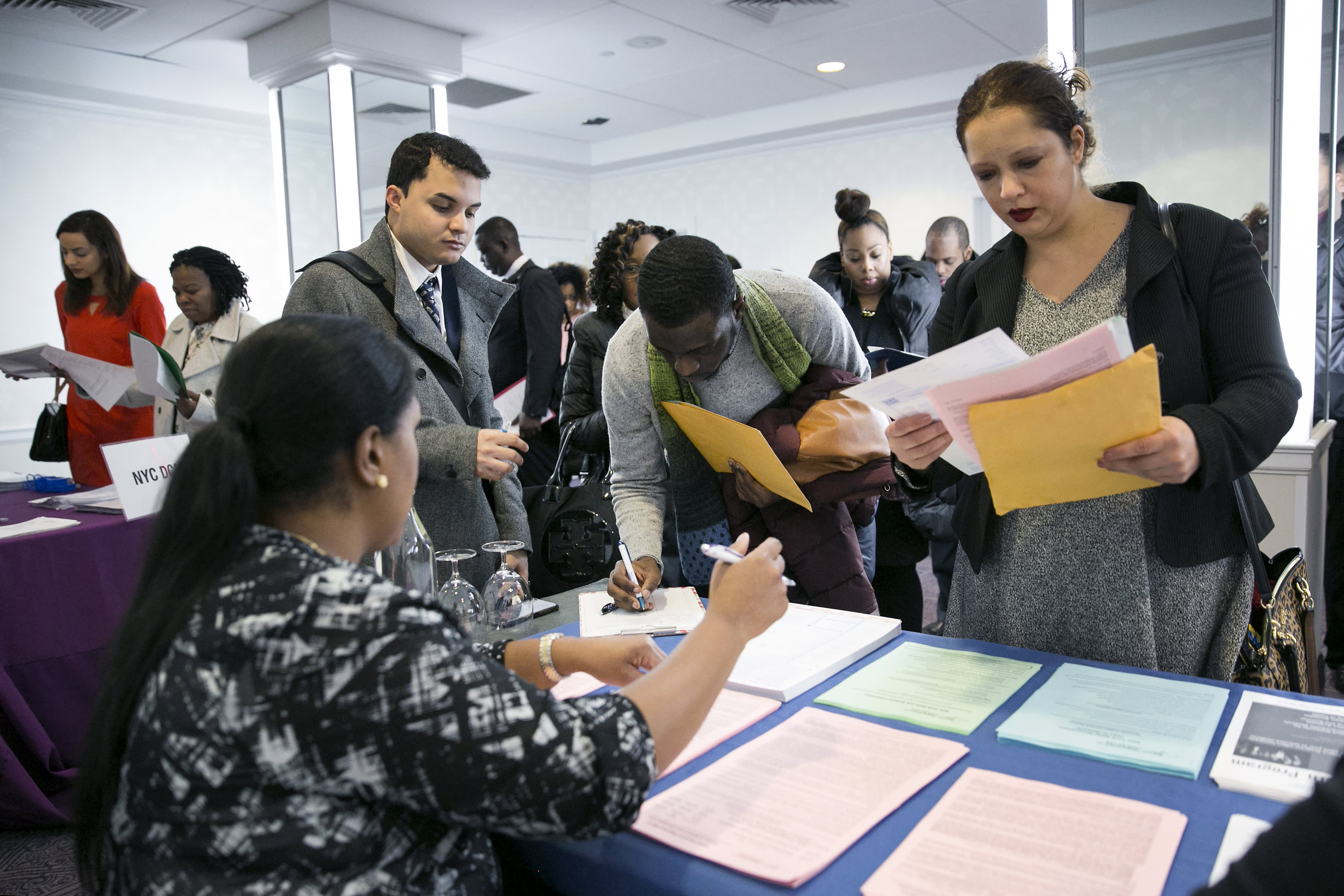Job growth slowed to a crawl in November, with private payrolls increasing by just 67,000, according to an estimate Wednesday from ADP and Moody's Analytics.
The count was well below the 150,000 consensus from economists surveyed by Dow Jones and the lowest month since May. The big miss could call into question the relatively rosy estimates for Friday's closely watched nonfarm payrolls report from the Labor Department, with the current forecast of 187,000 boosted by the return of striking GM workers.
November's tally also was a sharp decline from the 121,000 in October, which was revised down from an initially reported 125,000.
"The job market is losing its shine," Mark Zandi, chief economist for Moody's Analytics, said in a statement. "Manufacturers, commodity producers, and retailers are shedding jobs. Job openings are declining, and if job growth slows any further unemployment will increase."
Trade war taking toll
Zandi added that impacts from the tariffs between the U.S. and China are being felt in the employment picture. Weakness in manufacturing as well as resources and commodities industries can be tied to the exchange of hundreds of billions in duties that both sides have levied, with more possible later this month as negotiations drag on.
"The slowdown is more significant than I would have thought, and I do think that goes to the trade war," he said in a subsequent media conference call. "The trade war is doing damage to the economy and the jobs market."
Goods-producing industries lost 18,000 jobs for the month. The decline came amid an even split from natural resources/mining, construction, and manufacturing.
Trade, transportation and utilities, a sector that often leads job creation, saw a 15,000 loss, while information services also declined by 8,000.
Small businesses also had a poor month, as firms with fewer than 20 employees saw a drop of 15,000 workers.
"One bad month is not a trend, but the forward-looking surveys signal no relief over the next couple of months, at least," Ian Shepherdson, chief economist at Pantheon Macroeconomics, said in a note. "This is not about supply-side constraints, with firms unable to find all the people they want; labor demand clearly has weakened as the trade war has dampened activity, both directly via the cost of the tariffs and indirectly by creating great uncertainty for businesses."
Service industries otherwise saw some solid job growth. Leading sectors were education and health services (39,000), professional and business services (28,000) and leisure and hospitality (18,000). Wall Street-related jobs also gained, adding 11,000 to the total.
The end of the GM strike didn't show up in the ADP/Moody's count, but they should add 50,000 to the nonfarm payrolls report, which Zandi said also will be boosted by about 10,000 government hires. In all, he said he expects Friday's count to be in the 125,000 area.
Should that pace hold up on a monthly basis, that would be good enough to keep the unemployment rate at current low levels. However, Zandi added that the trend over the past year has decelerated considerably, raising questions about the job market's strength.
From a size perspective, the bulk of job creation came from bigger businesses. Companies with 50-499 employees added 29,000, while big business contributed 27,000. Those with 20-49 employees grew by 25,000.
The ADP/Moody's count and the official government report can differ widely at times, though they often jibe at least in terms of direction. In October, ADP showed a growth of 121,000 private jobs, compared with the Labor Department's tally of 131,000. Government jobs, which are not included in the ADP count, declined by 3,000 in October.
Consensus estimates are for the unemployment rate to hold near a 50-year low of 3.6%.
Correction: An earlier headline misstated the projected jobs gains for November. It was 150,000.
